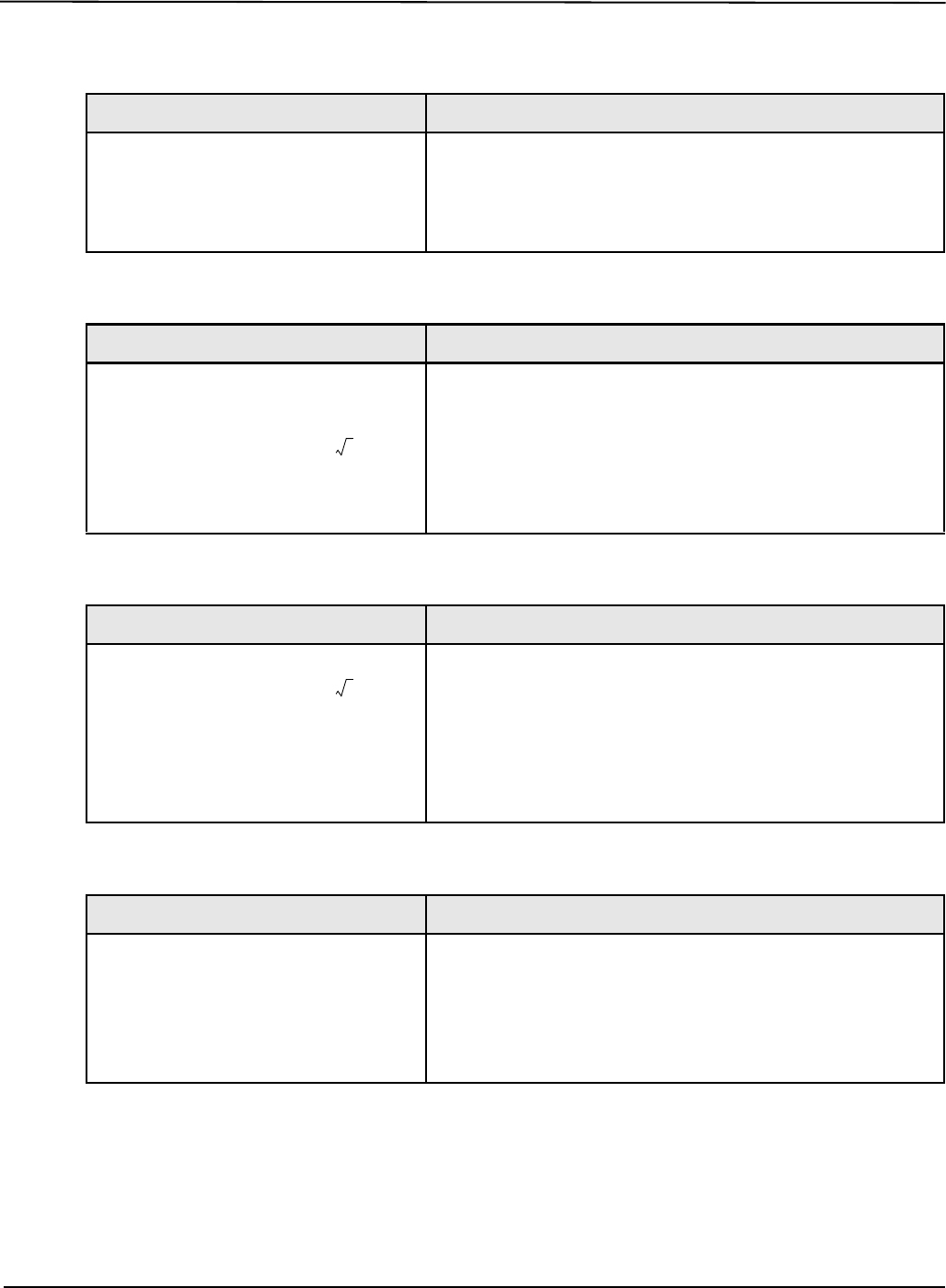
PowerLogic
TM
Series 800 Power Meter 63230-500-225A2
Appendix A—Instrument Transformer Wiring: Troubleshooting Tables 3/2011
© 2011 Schneider Electric All Rights Reserved
76
Section III: 4-Wire System Troubleshooting
Section III—Case A
Symptoms: 4-Wire Possible Causes
• kW = 1/3 of the expected value
• kVAR = 1/3 of the expected value
• power factor = 1/3 of the expected value
• All else is normal
• One CT polarity is backwards.
NOTE: The only way this problem will usually be detected is by the Quick Check
procedure. It is very important to always calculate kW. In this case, it is the only symptom
and will go unnoticed unless the calculation is done or someone notices backwards CT on
a waveform capture.
Section III—Case B
Symptoms: 4-Wire Possible Causes
• kW = 1/3 of the expected value
• kVAR = 1/3 of the expected value
• 2 of the 3 line-to-line voltages are low
• power factor = 1/3 of the expected value
• All else is normal
• One PT polarity is backwards.
NOTE: The line-to-line voltage reading that does not reference the PT with backwards
polarity will be the only correct reading.
Example: , ,
In this case, the A-phase PT polarity is backwards. is correct because it does not
reference .
Section III—Case C
Symptoms: 4-Wire Possible Causes
• One line-to-neutral voltage is zero
• 2 of the 3 line-to-line voltages are low
• kW = 2/3 of the expected value
• kVAR = 2/3 of the expected value
• kVA = 2/3 of the expected value
• Power factor may look abnormal
• PT metering input missing (blown fuse, open phase disconnect, etc.) on the
phase that reads zero.
NOTE: The line-to-line voltage reading that does not reference the missing PT input will be
the only correct reading.
Example: , ,
In this case, the B-phase PT input is missing. is correct because it does not
reference .
Section III—Case D
Symptoms: 4-Wire Possible Causes
• 3-phase kW = 2/3 of the expected value
• 3-phase kVAR = 2/3 of the expected value
• 3-phase kVA = 2/3 of the expected value
• One phase current reads 0
• All else is normal
• The CT on the phase that reads 0 is short-circuited.
• Less than 2% current (based on CT ratio) flowing through the CT on the
phase that reads 0.
